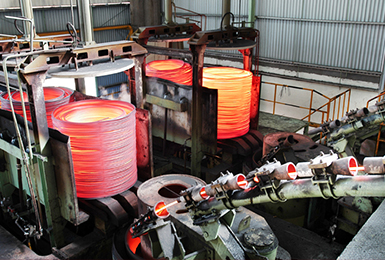Oct . 11, 2024 15:36 Back to list
Innovative Flexible Materials for Enhanced Sound Absorption in Various Environments
The Importance of Flexible Sound Absorbing Materials
In today's fast-paced and ever-evolving world, noise pollution has emerged as a significant environmental concern. With urbanization and industrialization on the rise, the need for effective sound management solutions has never been more critical. One of the most promising advancements in this field is the development of flexible sound absorbing materials. These materials not only enhance acoustic comfort but also hold potential for various applications in construction, transportation, and consumer goods.
Understanding Sound Absorption
Before diving into the specifics of flexible sound absorbing materials, it's essential to understand the concept of sound absorption. Sound waves, when they encounter an acoustic barrier, can either be reflected, transmitted, or absorbed. Absorption occurs when sound energy is converted into a small amount of heat, effectively reducing the sound energy in a given space. The effectiveness of a material to absorb sound is measured by its Noise Reduction Coefficient (NRC), where a higher NRC value indicates better sound absorption capabilities.
The Role of Flexibility
The term 'flexible' in sound absorbing materials refers to their ability to bend, conform, and adapt to various surfaces and shapes. This characteristic is especially beneficial in modern architectural design, where aesthetics and functionality need to meet. Traditional sound absorbing materials, such as rigid panels, often lack the versatility required for applications in complex environments. Flexible materials, on the other hand, can be integrated into various spaces ranging from offices to auditoriums, dramatically improving sound quality without compromising design.
Applications in Construction
One of the most significant applications of flexible sound absorbing materials is in the construction industry. These materials can be used in walls, ceilings, and floors to minimize noise transmission between different areas of a building. For instance, sound absorbing panels made from flexible materials can be installed in open-plan offices to reduce noise levels, fostering a more productive work environment.
Moreover, flexible sound absorbing materials are critical in residential spaces, particularly in multi-unit buildings where thin walls can lead to sound leakage
. By incorporating these materials into the design of walls and ceilings, architects can create a more peaceful living experience for residents, thereby increasing the property’s appeal.flexible sound absorbing material

Transportation Innovations
The transportation sector is another area where flexible sound absorbing materials are making waves. Vehicles, from cars to trains, are subject to various noise sources, including engine sounds, wind noise, and vibrations from the road or track. By utilizing flexible sound absorbing materials, manufacturers can significantly reduce the noise levels within the cabin, leading to a more comfortable ride for passengers.
For instance, rubber-like sound absorbing composites are increasingly being used in car interiors and under the hood to dampen excessive noise, making journeys quieter and more enjoyable. Similarly, train manufacturers are adopting these materials to enhance passenger comfort and mitigate the impact of noise pollution in surrounding communities.
Consumer Goods and Beyond
Beyond construction and transportation, flexible sound absorbing materials have applications in consumer goods as well. Products such as noise-canceling headphones often use advanced acoustic materials to provide superior sound quality while minimizing external noise.
Moreover, as people become increasingly aware of the importance of mental health and wellbeing, the demand for quieter living spaces has led to a surge in products designed with sound absorption in mind—everything from acoustic panels for home offices to soundproof curtains for bedrooms.
Future Directions
The future of flexible sound absorbing materials looks promising. Researchers are continuously working on improving the efficiency and eco-friendliness of these materials. Innovations such as bio-based composites and materials made from recycled products are gaining traction, providing sustainable solutions to noise pollution problems.
In conclusion, flexible sound absorbing materials play a vital role in addressing the challenges posed by noise pollution across various sectors. Their adaptability, effectiveness, and aesthetic compatibility make them invaluable in creating a more harmonious living and working environment. As technology advances, the potential for these materials will only expand, contributing to a future where sound and silence coexist in perfect balance.
-
Eco-Friendly Granule Covering Agent | Dust & Caking Control
NewsAug.06,2025
-
Fe-C Composite Pellets for BOF: High-Efficiency & Cost-Saving
NewsAug.05,2025
-
Premium Tundish Covering Agents Exporters | High Purity
NewsAug.04,2025
-
Fe-C Composite Pellets for BOF | Efficient & Economical
NewsAug.03,2025
-
Top Tundish Covering Agent Exporters | Premium Quality Solutions
NewsAug.02,2025
-
First Bauxite Exporters | AI-Optimized Supply
NewsAug.01,2025
